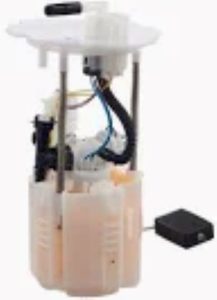Construction material, engineering, and operating modifications ensure the fuel pumps can operate effectively under the low-temperature conditions. Under 32°F, gasoline thickens up and requires the fuel pump to do more labor to push the fuel through the lines. To handle this, today's fuel pumps utilize high-torque motors designed to keep the pressure up as the fuel viscosity increases, ensuring that the engine gets enough fuel at proper pressure-usually between 30 to 80 PSI.
Materials used by manufacturers resist cold-induced brittleness: stainless steel and high-grade plastics that prevent cracking and maintain flexibility. Other components, such as seals and O-rings, commonly made from synthetic rubber, remain pliable in temperatures as low as -20°F and serve to prevent leaks that could reduce both pump efficiency and its lifespan. Fuel pump housings, usually made from aluminum or high-strength composites, also protect internal components from the temperature extremes and enable stable operation even in winter conditions.
Other useful accessories are fuel additives that assist the fuel pump operate in cold weather conditions. These additives depress the freezing point of the fuel, inhibiting the growth of ice in fuel lines, which forms blockages that could lead to the devastation of the pump. Addition of isopropyl alcohol to the fuel tank prevents fuel line freeze-up at temperatures as low as -40°F and maintains steady fuel supply into the pump.

Another factor is electrical efficiency about performance in cold conditions of the fuel pump. Low temperatures can reduce battery efficiency, sometimes as high as a 20% reduction in available power, which may affect performance related to the fuel pump. Most modern fuel pumps are designed to draw minimum power to allow them to keep working even on slightly reduced voltage. This design ensures that, under conditions of constrained power supply, the pump operates at a flow rate of approximately 200-300 liters an hour, related to the vehicle's specifications.
Under extremely cold temperatures, some vehicles have fuel heaters installed that preheat the fuel before it reaches the pump to minimize load on the motor and to prevent thickened fuel from clogging the system. These keep fuel pump components working properly and extend the life span of the Fuel Pump to help make engines more reliable when starting in cold weather.
These design features make fuel pumps capable of supporting low temperatures while providing reliable vehicle starts and maintaining consistent fuel pressure during difficult winter conditions.